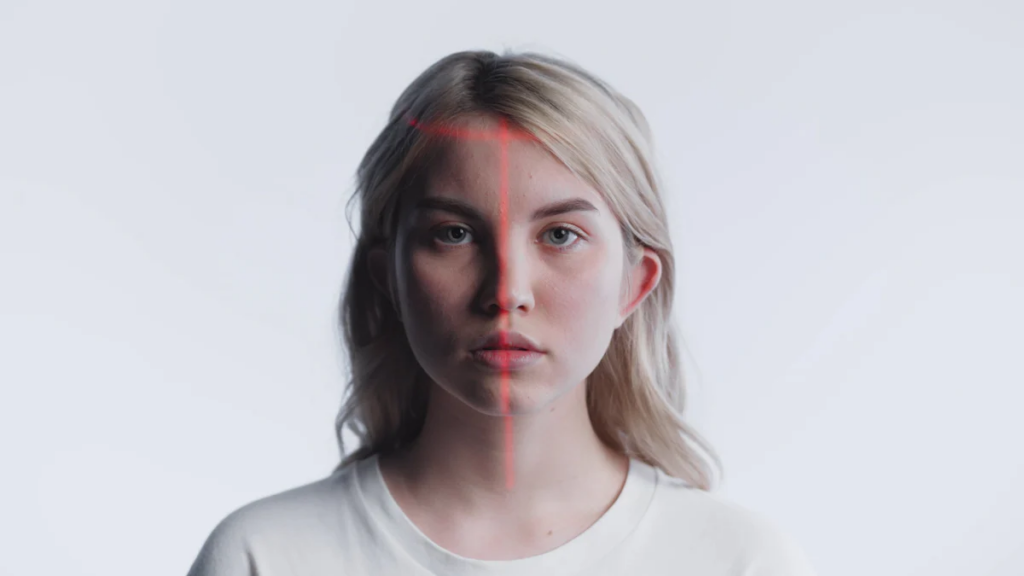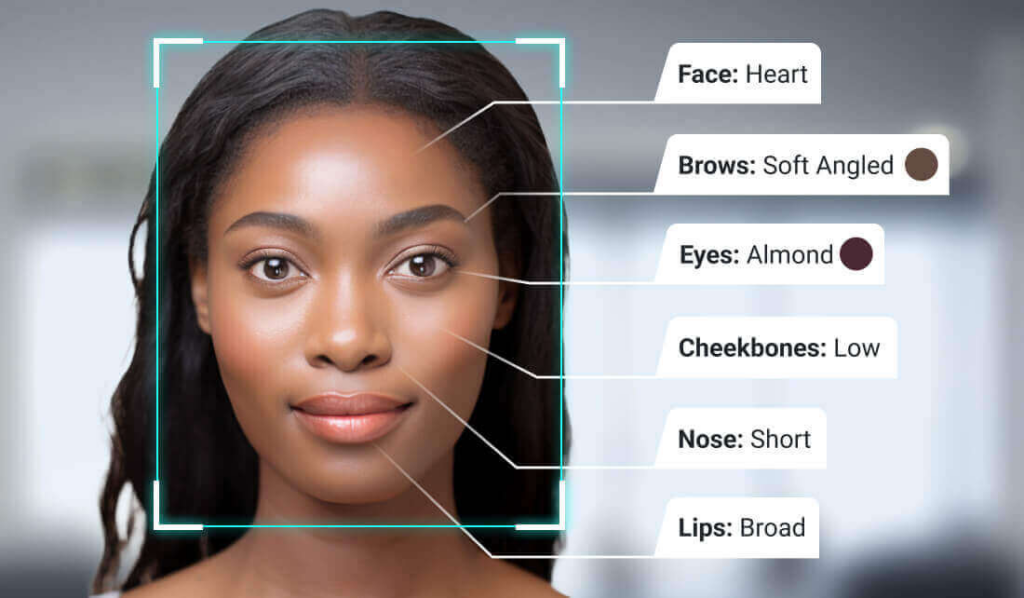AI-powered tools have revolutionized the way facial aesthetics are evaluated. These tools analyze various aspects of a face, such as symmetry, proportions, and skin clarity, to generate detailed attractiveness scores. Face attractiveness tests, like those offered by advanced platforms, rely on cutting-edge facial recognition technology to assess beauty standards. For instance, AI systems compare facial features against normative data, reflecting contemporary beauty ideals. This innovation has found applications in entertainment, research, and personalized beauty solutions, offering users valuable insights into their facial attributes. The growing demand for such tools highlights their significance in modern beauty analysis.

Key Takeaways
- AI face attractiveness tools analyze facial features like symmetry and proportions to provide objective beauty scores, helping users understand their facial aesthetics.
- Face++ is highlighted as the leading tool due to its innovative features, including the ‘Beauty Score’ and AI face shape identifier, which enhance personalized beauty recommendations.
- The accuracy of these tools is crucial; Face++ achieves an impressive error rate of just 0.08%, making it a reliable choice for users seeking precise evaluations.
- Usability is a key factor; tools like Face++ and AI Face Analyzer offer user-friendly interfaces and mobile apps, making advanced facial analysis accessible to everyone.
- AI tools have diverse applications in entertainment, research, and personal beauty assessments, showcasing their versatility in various industries.
- While AI tools provide valuable insights, they should complement human judgment, as beauty perceptions can be subjective and influenced by cultural factors.
- Addressing biases in datasets is essential for improving the accuracy and inclusivity of AI face attractiveness tools, ensuring fair evaluations for all users.
Key Features of Top AI Face Attractiveness Tools
Tool 1: Face++

Core features and functionalities
Face++ stands out as a leading tool in the realm of facial analysis. It offers a comprehensive suite of functionalities powered by advanced AI technology. The tool excels in facial recognition, detection, and analysis, making it a versatile solution for various applications. Its robust algorithms ensure accurate results even under challenging conditions, such as poor lighting or varying facial expressions.
The platform provides essential features like gender, age, and emotion detection, alongside more advanced capabilities. These include face comparison, face grouping, and detailed facial feature analysis. The integration of cutting-edge technology allows Face++ to deliver precise and reliable outputs, catering to both professional and personal use cases.
Unique selling points, including the ‘Beauty Score’ and AI face shape identifier
One of the most notable features of Face++ is its innovative ‘Beauty Score’ system. This feature evaluates facial aesthetics by analyzing symmetry, proportions, and other key attributes. The tool also incorporates an AI face shape identifier, which accurately determines face shapes, offering users insights into their unique facial structure.
The AI face shape identifier is particularly valuable for applications in beauty and fashion, where understanding face shape plays a crucial role in personalized recommendations. By combining these advanced features with user-friendly functionality, Face++ has established itself as a top choice for face attractiveness tests.
Tool 2: AI Face Analyzer

Core features and functionalities
The AI Face Analyzer leverages advanced facial recognition technology to provide detailed insights into facial aesthetics. Its core functionalities include symmetry analysis, which evaluates the balance between facial features, and emotion detection, which identifies subtle expressions. These features make it a powerful tool for assessing beauty and understanding emotional cues.
The tool’s algorithms are designed to handle diverse facial structures, ensuring inclusivity and accuracy across different demographics. Its ability to analyze facial features with precision makes it a reliable option for users seeking a deeper understanding of their facial attributes.
Unique selling points, such as symmetry analysis and emotion detection
The AI Face Analyzer sets itself apart with its focus on symmetry analysis. This feature examines the alignment of facial features, a critical factor in determining perceived attractiveness. Additionally, its emotion detection capability adds a unique dimension by interpreting facial expressions and their impact on overall aesthetics.
This tool also emphasizes inclusivity, ensuring that its algorithms perform well across various skin tones and facial structures. By combining these strengths, the AI Face Analyzer offers a holistic approach to facial analysis, making it a valuable resource for beauty enthusiasts and researchers alike.
Tool 3: DeepFace
Core features and functionalities
DeepFace, developed by Facebook AI Research, is a powerful tool for facial recognition and analysis. It integrates state-of-the-art algorithms to deliver high-accuracy results. The tool supports functionalities like face verification, real-time face analysis, and facial attribute prediction. Its lightweight design and flexibility make it suitable for both mobile and web applications.
The tool’s ability to predict attributes such as age, gender, and ethnicity demonstrates its versatility. Its deep learning-based approach ensures that it remains at the forefront of facial analysis technology.
Unique selling points, including deep learning-based facial analysis
The deep learning foundation of DeepFace is its most significant advantage. This approach enables the tool to process complex facial data with remarkable accuracy. Its facial attribute analysis module achieves impressive results, such as a 97% accuracy rate for gender prediction and a mean absolute error of +/- 4.6 years for age estimation.
Another unique feature is its ability to perform on-device face recognition, ensuring privacy and efficiency. By combining cutting-edge algorithms with practical applications, DeepFace offers a robust solution for users seeking advanced facial analysis tools.
Accuracy and Performance Metrics
How accuracy is measured in AI face attractiveness tools
Explanation of datasets and benchmarks used, such as KNN and deep learning models
AI face attractiveness tools rely on robust datasets and advanced benchmarks to ensure reliable evaluation. These datasets often include thousands of facial images representing diverse demographics, allowing the tools to train their algorithms effectively. The use of K-Nearest Neighbors (KNN) and deep learning models plays a pivotal role in achieving high accuracy. KNN, a widely used algorithm, evaluates facial features by comparing them to the closest matches within the dataset. This method ensures an accurate identification process by focusing on proximity-based comparisons.
Deep learning models, on the other hand, utilize neural networks to analyze complex patterns in facial data. These models excel in predictive performance, enabling tools to assess facial symmetry, proportions, and other aesthetic factors with remarkable precision. For instance, studies have shown that AI-driven tools like Face++ achieve an error rate as low as 0.08%, setting a benchmark for accuracy in the field. Such advancements highlight the importance of combining diverse datasets with cutting-edge algorithms to enhance the evaluation process.
Comparison of accuracy scores across tools, with Face++ achieving an error rate as low as 0.08%
When comparing the accuracy of top AI face attractiveness tools, Face++ consistently outperforms its competitors. Its advanced algorithms and comprehensive datasets contribute to its superior performance. The tool’s ability to deliver precise evaluations stems from its integration of deep learning techniques and facial age predictors. These features allow it to analyze facial attributes with exceptional accuracy, making it a preferred choice for users seeking reliable results.
Other tools, such as the AI Face Analyzer and DeepFace, also demonstrate strong predictive performance. The AI Face Analyzer excels in symmetry analysis, while DeepFace leverages its deep learning foundation to achieve high accuracy in age prediction and gender identification. However, Face++ maintains its edge by combining these capabilities with an error rate of just 0.08%, underscoring its dominance in the field of facial evaluation.
Real-world performance
Consistency of results across different demographics
The real-world performance of AI face attractiveness tools depends heavily on their ability to deliver consistent results across diverse demographics. Tools like Face++ and the AI Face Analyzer have been designed to account for variations in skin tone, facial structure, and age. This inclusivity ensures that their algorithms perform well regardless of the user’s background. For example, the AI Face Analyzer uses symmetry analysis and proportionality metrics to provide unbiased evaluations, making it suitable for a wide range of users.
Despite these advancements, some tools still face challenges in maintaining consistency. Variations in lighting, image quality, and facial expressions can impact the accuracy of evaluations. To address these issues, developers continue to refine their algorithms and expand their datasets, ensuring that the tools remain reliable in real-world scenarios.
Limitations and biases, including discrepancies between AI and human ratings
While AI tools have made significant strides in facial evaluation, they are not without limitations. One of the most notable challenges is the discrepancy between AI-generated ratings and human perceptions of attractiveness. Studies indicate that humans often rate facial features higher than AI tools, highlighting a gap in predictive performance. This difference arises from the subjective nature of human judgment, which considers factors beyond symmetry and proportions.
Biases in datasets also pose a challenge for AI tools. Limited representation of certain demographics can lead to skewed evaluations, affecting the accuracy of results. For instance, tools trained on datasets lacking diversity may struggle to analyze facial features from underrepresented groups. Addressing these biases requires the inclusion of more comprehensive datasets and the development of algorithms that prioritize fairness and inclusivity.
Despite these challenges, AI-driven tools continue to evolve, offering increasingly accurate and objective evaluations. By refining their algorithms and expanding their datasets, developers aim to bridge the gap between AI and human ratings, ensuring that these tools remain valuable resources for facial analysis.
Usability and User Experience
Ease of use
Interface design and navigation of tools like Face++ and AI Face Analyzer
AI-powered tools like Face++ and AI Face Analyzer prioritize simplicity in their interface design. Their layouts focus on intuitive navigation, ensuring users can access features without confusion. For instance, Face++ employs a clean and organized dashboard that categorizes its functionalities, such as facial recognition and the ‘Beauty Score,’ into distinct sections. This structure minimizes the learning curve for new users.
The AI Face Analyzer enhances usability by incorporating visual guides and prompts. Users can upload images or activate their cameras with a single click, streamlining the process. The tool’s design reduces errors by providing clear instructions at every step. Feedback from users highlights the engaging experience these tools offer, with many appreciating the straightforward approach to analyzing facial attributes.
“Users enjoy the simplicity of taking a selfie or activating their camera and receiving immediate results,” according to a recent survey on AI usability.
Accessibility for non-technical users, including mobile app availability
Accessibility plays a crucial role in the success of AI-based facial analysis tools. Both Face++ and AI Face Analyzer cater to non-technical users by offering mobile applications. These apps allow users to perform facial evaluations on the go, making the tools more convenient. The mobile versions retain the core functionalities of their desktop counterparts while optimizing the interface for smaller screens.
The tools also support multiple languages, ensuring inclusivity for a global audience. By simplifying technical processes, they make advanced facial analysis accessible to individuals without specialized knowledge. This approach aligns with the growing demand for user-friendly solutions in the beauty and entertainment industries.
Practical applications
Use cases in entertainment, research, and personal beauty assessments
AI-powered facial analysis tools have found diverse applications across industries. In entertainment, these tools assist in casting decisions by evaluating facial symmetry and proportions. Filmmakers and advertisers use them to identify faces that align with specific aesthetic standards. Researchers leverage these tools to study human perceptions of beauty, exploring how facial features influence attractiveness.
Personal beauty assessments represent another significant use case. Virtual try-on technologies, integrated with tools like Face++, allow users to experiment with hairstyles, makeup, and accessories. These technologies enhance personalization by tailoring recommendations to individual facial attributes. For example, the AI face shape identifier in Face++ helps users select styles that complement their unique features.
A survey revealed that traditional quizzes often left users dissatisfied due to limited options, emphasizing the need for precise and user-friendly alternatives like virtual try-on technologies.
Feedback from users and reviews highlighting strengths and weaknesses
User feedback provides valuable insights into the strengths and weaknesses of AI facial analysis tools. Many users praise the enhanced user experience offered by tools like Face++ and AI Face Analyzer. They highlight the accuracy of facial evaluations and the engaging interface design as key strengths. The ability to receive instant results after uploading an image or taking a selfie stands out as a major advantage.
However, some users note areas for improvement. For instance, discrepancies in results due to lighting conditions or image quality remain a concern. Others mention the need for more diverse datasets to ensure fairness across all demographics. Despite these challenges, the overall response remains positive, with users recognizing the transformative potential of these tools in facial analysis.
Comparison Summary and Final Recommendation
Side-by-side comparison of tools
Features, including AI face shape identifier and symmetry analysis
The features offered by the top AI-powered tools highlight their unique strengths in facial analysis. Face++ leads with its advanced AI face shape identifier, which provides users with detailed insights into their facial structure. This feature proves invaluable for applications like personalized beauty solutions and personalized cosmetic products, where understanding facial shapes can guide tailored recommendations. The AI Face Analyzer, on the other hand, excels in symmetry analysis, a critical factor in determining facial attractiveness. Its ability to evaluate the alignment of facial features ensures precise results, making it a reliable choice for users seeking a comprehensive face attractiveness test.
DeepFace stands out with its deep learning-based approach, enabling it to analyze complex facial patterns with remarkable accuracy. Its facial attribute prediction module, which includes age and gender estimation, adds versatility to its offerings. While all three tools provide robust features, Face++ combines innovation and usability, making it a preferred option for users who value both functionality and ease of use.
Accuracy, with Face++ leading in performance metrics
In terms of accuracy, Face++ sets the benchmark with an error rate as low as 0.08%. Its algorithm leverages deep learning models and extensive datasets to deliver precise evaluations of facial features. This high level of accuracy ensures consistent results, even under challenging conditions like poor lighting or varying facial expressions. The AI Face Analyzer also performs well, particularly in symmetry analysis, but its accuracy slightly lags behind Face++ in broader facial evaluations.
DeepFace achieves impressive results in specific areas, such as gender prediction, with a 97% accuracy rate. However, its overall performance does not surpass Face++, which excels across multiple metrics. The comparison of these tools clearly positions Face++ as the leader in accuracy, making it the most reliable choice for users seeking dependable results in a face attractiveness test.
Usability, focusing on user-friendly interfaces
Usability plays a crucial role in the effectiveness of AI-powered tools. Face++ offers a clean and intuitive interface, allowing users to navigate its features effortlessly. Its mobile app ensures accessibility, enabling users to perform facial evaluations on the go. The AI Face Analyzer also prioritizes user experience with visual guides and prompts that simplify the process. Its straightforward design caters to non-technical users, making it an excellent option for those new to AI-based tools.
DeepFace, while powerful, presents a slightly steeper learning curve due to its technical focus. Its interface, though functional, lacks the simplicity of Face++ and the AI Face Analyzer. Overall, Face++ emerges as the most user-friendly tool, combining advanced features with an accessible design that appeals to a broad audience.
Final verdict
Face++ stands out as the best tool due to its accuracy, features, and usability
After a thorough comparison, Face++ clearly stands out as the best AI-powered tool for facial analysis. Its innovative features, such as the AI face shape identifier and ‘Beauty Score,’ set it apart from competitors. The tool’s exceptional accuracy, supported by advanced algorithms, ensures reliable evaluations of facial features. Additionally, its user-friendly interface makes it accessible to both technical and non-technical users. These strengths make Face++ the top recommendation for anyone seeking a comprehensive face attractiveness test.
Suggestions for improvement, such as addressing biases and enhancing diversity in datasets
Despite its strengths, Face++ has room for improvement. Addressing biases in its algorithm remains a priority, as limited representation in datasets can affect the accuracy of evaluations for underrepresented demographics. Expanding the diversity of datasets would enhance the tool’s inclusivity, ensuring fair and unbiased results for all users. Additionally, incorporating more advanced features, such as real-time facial morphing or enhanced emotion detection, could further solidify its position as the leading tool in facial analysis.
By continuing to refine its features and addressing existing limitations, Face++ can maintain its dominance in the field while offering even greater value to users.

Face++ emerges as the leading AI tool for facial analysis, excelling in accuracy, features, and usability. Its advanced algorithms and comprehensive datasets ensure precise evaluations, making it a reliable choice for users. The tool’s user-friendly interface enhances accessibility, catering to both technical and non-technical audiences. With applications spanning entertainment, research, and personal beauty assessments, Face++ demonstrates its versatility. Accuracy and user experience remain critical when selecting an AI face attractiveness tool. Readers are encouraged to explore Face++ to experience its robust capabilities and determine how it aligns with their specific needs.
FAQ
What is an AI face attractiveness tool?
An AI face attractiveness tool uses artificial intelligence to evaluate facial features and provide an attractiveness score.
How do these tools measure facial attractiveness?
AI tools measure facial attractiveness by analyzing specific features such as symmetry, facial proportions, and skin texture. They use machine learning models, including KNN and deep learning, to compare facial data against large datasets. These models identify patterns and calculate scores based on predefined aesthetic criteria.
Are AI face attractiveness tools accurate?
AI face attractiveness tools demonstrate high accuracy, with some achieving error rates as low as 0.08%. Tools like Face++ excel in precision due to their advanced algorithms and diverse datasets. However, factors like image quality and lighting can influence results, and human perceptions of beauty may differ from AI evaluations.
Can these tools work across different demographics?
Most AI tools aim to deliver consistent results across various demographics. Developers train algorithms on diverse datasets to ensure inclusivity. Tools like the AI Face Analyzer emphasize fairness by accounting for variations in skin tone, age, and facial structure. However, biases in datasets can still affect performance for underrepresented groups.
What are the practical applications of these tools?
AI face attractiveness tools have applications in entertainment, research, and personal beauty assessments. Casting directors use them to evaluate facial aesthetics for roles. Researchers study human perceptions of beauty using these tools. Additionally, individuals use them for personalized beauty recommendations, such as makeup or hairstyle suggestions.
Are these tools easy to use for non-technical users?
Yes, most tools prioritize user-friendly interfaces. Platforms like Face++ and AI Face Analyzer feature intuitive designs that simplify navigation. Mobile apps enhance accessibility, allowing users to upload images or take selfies for instant results. Clear instructions and visual guides make these tools suitable for non-technical users.
Do AI tools replace human judgment in beauty assessments?
AI tools provide objective evaluations based on measurable criteria like symmetry and proportions. However, they do not replace human judgment, which considers subjective factors such as personality and cultural influences. These tools complement human assessments by offering data-driven insights into facial aesthetics.
Are there any limitations to AI face attractiveness tools?
AI tools face limitations, including biases in datasets and discrepancies between AI and human ratings. Limited representation in training data can lead to skewed results for certain demographics. Additionally, factors like lighting, image quality, and facial expressions can impact accuracy. Developers continue to address these challenges to improve performance.
How do these tools ensure privacy and data security?
Reputable AI tools prioritize user privacy by implementing strict data security measures. Some, like DeepFace, perform on-device analysis to avoid storing user data on external servers. Users should review the privacy policies of each tool to ensure their data remains secure during the evaluation process.
Which AI face attractiveness tool is the best?
Face++ stands out as the best tool due to its accuracy, features, and usability. Its advanced algorithms deliver precise evaluations, while its user-friendly interface ensures accessibility. The tool’s innovative features, such as the AI face shape identifier and ‘Beauty Score,’ make it a top choice for facial analysis.


